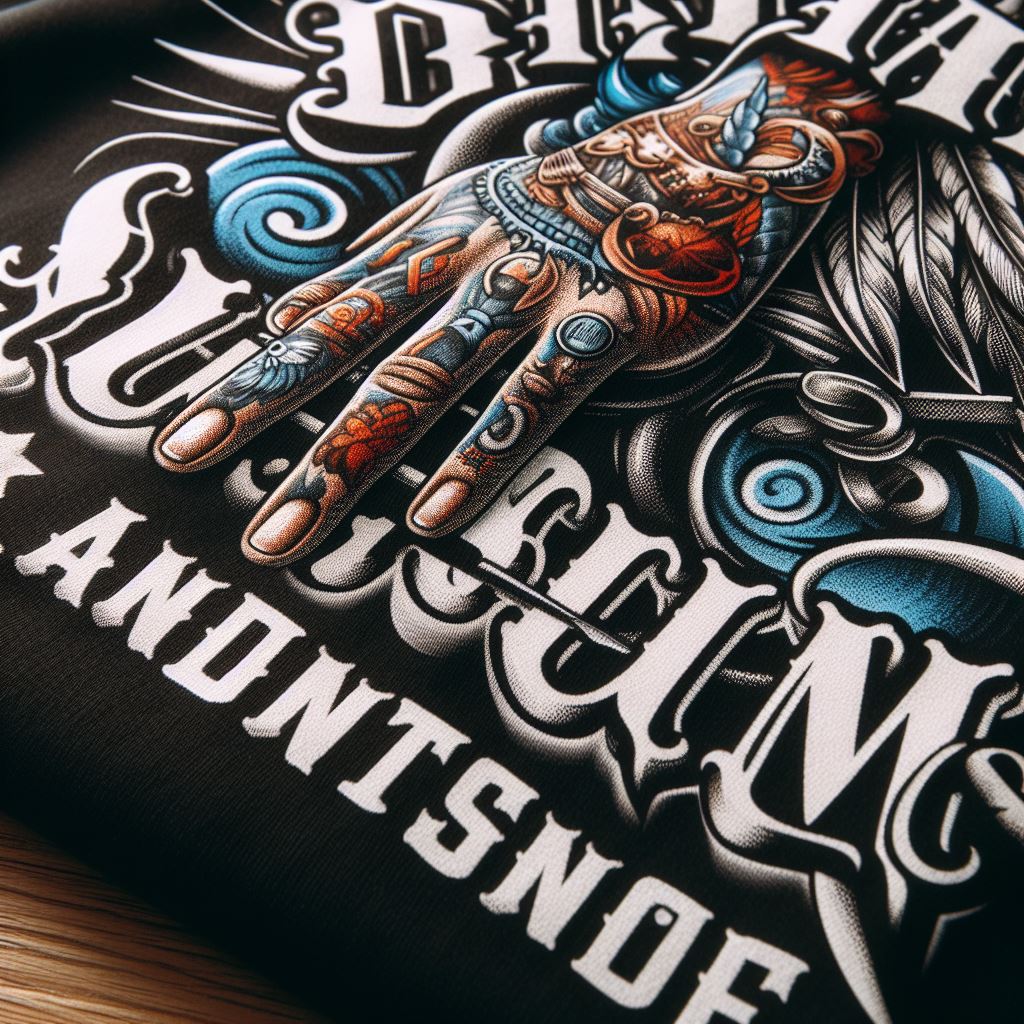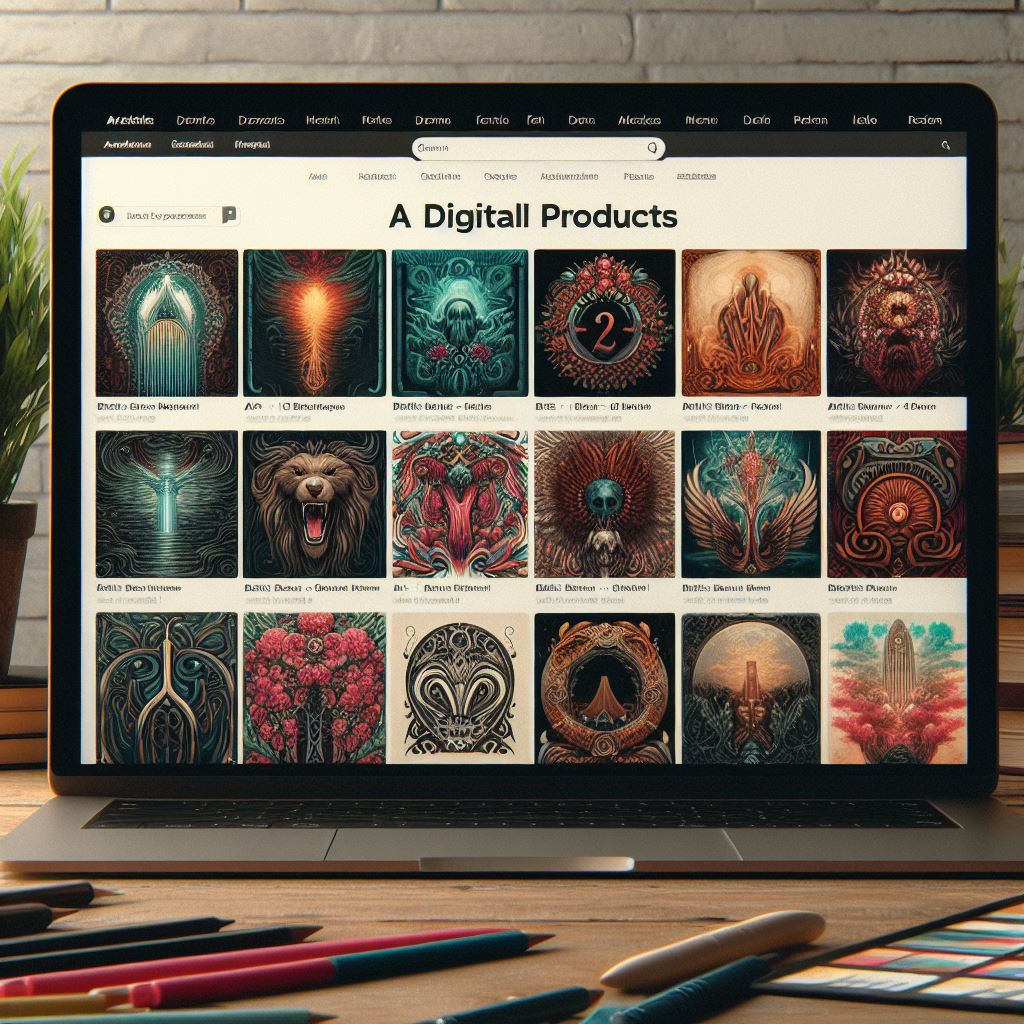
How to Make Your Own T-Shirt Designs: A Creative Guide
Share
Welcome to the world of t-shirt design! Whether you're looking to create a unique piece for yourself, a gift for a loved one, or even start your own apparel line, learning how to make your own t-shirt designs can be an incredibly rewarding and fun process. This guide will walk you through the basics, from the initial concept to the final product, ensuring that your creative vision comes to life.
T-shirts are a staple in everyone's wardrobe and a fantastic canvas for personal expression. Designing your own t-shirts allows you to showcase your unique style, message, or even your favorite quotes from the Bible. By the end of this guide, you'll have the knowledge and confidence to create designs that not only look great but also resonate with your personal beliefs and aesthetics.
We'll cover essential topics such as:
- Choosing the right materials and tools
- Understanding design principles
- Exploring different printing methods
- Adding finishing touches to make your designs stand out
So get ready to embark on a creative journey filled with inspiration and discovery. To learn more today, visit oldhippys.com and explore our range of products that reflect the Jesus Hippie culture. Let's get started!
Gathering Your Design Tools

Before you dive into the creative process, it's crucial to gather all the necessary tools for designing your t-shirts. Having the right materials at your disposal will make the design process smoother and more enjoyable. Here’s a list of essential tools you'll need:
- Sketchbook or Drawing Pad: A place to jot down your initial ideas and sketches. This is where your creative journey begins.
- Pencils and Markers: Basic drawing tools for sketching out your designs. Colored markers can be especially useful for adding details and vibrant touches.
- Graphic Design Software: Digital tools like Adobe Illustrator, Photoshop, or free alternatives such as GIMP and Inkscape can help you bring your sketches to life with precision.
- Tablet or Drawing Tablet: For those who prefer digital drawing, a tablet can be a game-changer, allowing for more fluid and natural design creation.
- High-Quality Printer: If you plan to print your designs at home, investing in a high-quality printer will ensure your designs look professional and vibrant.
- Transfer Paper: This is essential for transferring your design from paper to fabric, especially if you're using techniques like iron-on transfers.
- Heat Press: For a more professional finish, a heat press can provide consistent pressure and heat, ensuring your design adheres well to the fabric.
- Blank T-Shirts: Finally, you'll need a variety of blank t-shirts in different sizes and colors to apply your designs. Consider the fabric type (cotton, polyester, blends) as it can affect the final look of your design.
With these tools in hand, you're well on your way to creating stunning t-shirt designs. In the next section, we'll delve into the principles of design to help you create visually appealing and meaningful artwork.
Choosing the Right Materials

Once you have your design tools ready, the next step is to choose the right materials for your t-shirt designs. The materials you select will greatly influence the quality and durability of your final product. Here are some key considerations to keep in mind:
- Fabric Type: The most common fabric types for t-shirts are cotton, polyester, and blends. Cotton is soft, breathable, and ideal for everyday wear. Polyester is durable and resistant to shrinking, making it great for sportswear. Blended fabrics combine the best of both worlds, offering comfort and durability.
- Fabric Weight: Fabric weight is measured in grams per square meter (GSM). Lighter fabrics (around 150 GSM) are great for summer and casual wear, while heavier fabrics (around 200 GSM) offer more durability and are better for colder weather.
- Color: The color of your t-shirt can affect how your design appears. Light-colored shirts allow for more vibrant and true-to-color prints, whereas dark-colored shirts may require a white underbase to make the design pop.
- Finish: Some t-shirts come with different finishes like matte or glossy. A matte finish can give your design a more subdued look, while a glossy finish can make it stand out more.
- Print Method: The material you choose should be compatible with your print method. For example, direct-to-garment (DTG) printing works best on 100% cotton, while sublimation printing is ideal for polyester fabrics.
- Thread Count: A higher thread count typically indicates a finer and smoother fabric, which can be better for detailed designs.
Choosing the right materials is an essential step in ensuring your t-shirt designs are not only visually appealing but also comfortable and long-lasting. Up next, we’ll explore the principles of design to help you create artwork that captivates and communicates effectively.
Creating Your Design Concept
Once you've selected the right materials, it's time to dive into creating your design concept. This is where your creativity truly comes into play. A great design concept is the foundation of any successful t-shirt. Here are some steps to guide you through this process:
- Brainstorm Ideas: Start by brainstorming different themes and ideas that resonate with your target audience. Think about what messages, symbols, or imagery will connect with them. Jot down every idea, no matter how wild it seems—sometimes the most unconventional ideas turn into the best designs.
- Research Trends: Look into current t-shirt design trends for inspiration. Platforms like Pinterest, Instagram, and design blogs can provide a wealth of ideas. While it's important to be unique, understanding what's popular can help you create a design that appeals to a broader audience.
- Sketch Your Ideas: Before moving to digital tools, sketch out your ideas on paper. This can help you visualize the composition and layout of your design. Don't worry about making it perfect; the goal is to flesh out your concept.
- Choose a Style: Decide on the style of your design. Are you going for a minimalist look, a vintage feel, or something bold and colorful? The style should align with the message you want to convey and the preferences of your target audience.
- Select Fonts and Colors: Typography and color choices are crucial elements of your design. Choose fonts that are readable and complement your design style. Similarly, select colors that evoke the right emotions and stand out on the t-shirt fabric you’ve chosen.
- Mockup Your Design: Use design software like Adobe Illustrator, Photoshop, or online tools like Canva to create a digital version of your design. This allows you to see how your concept translates into a finished product and make necessary adjustments.
Creating a compelling design concept involves a blend of creativity, research, and planning. With a solid concept in hand, you're ready to move on to the next phase: bringing your design to life through various printing techniques.
Printing Your T-Shirt Design

Now that you have a well-crafted design concept, it’s time to bring your vision to life by printing your t-shirt design. This step involves choosing the right printing method that suits your design and budget. Here are some popular options:
- Screen Printing: This traditional method involves creating a stencil (or screen) and using it to apply layers of ink on the t-shirt. Screen printing is ideal for bulk orders due to its cost-effectiveness and durability. It works best for designs with fewer colors and simple patterns.
- Direct-to-Garment (DTG) Printing: DTG printing uses a specialized inkjet printer to apply ink directly onto the fabric. This method is perfect for intricate designs and those with a lot of colors. It’s also great for small batches or one-off prints, although it may not be as durable as screen printing.
- Heat Transfer: In this method, a design is printed onto a special transfer paper and then heat-pressed onto the t-shirt. Heat transfer is versatile and allows for high-quality prints with vibrant colors. However, it may not be as long-lasting as other methods, especially with frequent washing.
- Vinyl Cutting: Vinyl cutting involves using a machine to cut out designs from colored vinyl sheets, which are then heat-pressed onto the t-shirt. This method is excellent for bold, simple designs and allows for a textured finish. It’s durable but can be more time-consuming and costly for complex designs.
- Sublimation Printing: Sublimation is a process where dye is transferred from a solid to a gas state without becoming liquid, bonding with the fabric at a molecular level. This method is ideal for polyester fabrics and all-over prints. It offers vibrant, long-lasting colors but is limited to light-colored, synthetic fabrics.
Each printing method has its pros and cons, so choose the one that best fits your design needs and production scale. With your printed t-shirt in hand, you're ready to showcase your unique creation to the world. Whether you’re making them for personal use, gifts, or a business venture, the final product will reflect your creativity and effort.
Caring for Your Custom T-Shirt

After investing time and creativity into making your own t-shirt design, it's crucial to know how to care for it properly to ensure it lasts and maintains its vibrant look. Here are some tips to help you keep your custom t-shirt in top condition:
- Washing: Always turn your t-shirt inside out before washing to protect the design. Use cold water and a gentle cycle to prevent the fabric and print from fading. Avoid using bleach or harsh detergents, as these can damage the print.
- Drying: Air drying is the best option for custom t-shirts. If you must use a dryer, choose a low heat setting to avoid shrinking and cracking the design. High heat can deteriorate both the fabric and the print.
- Ironing: If your t-shirt needs ironing, always turn it inside out and use a low heat setting. Never iron directly over the design, as the heat can cause it to melt or warp.
- Storage: Store your t-shirts in a cool, dry place. Avoid hanging them for long periods, as this can stretch the fabric. Folding them neatly and placing them in a drawer or on a shelf is the best way to maintain their shape.
- Handling Stains: Treat any stains promptly with a mild detergent or stain remover. Avoid rubbing the stain too harshly, as this can damage the fabric and print. Gently blot the stain and rinse with cold water.
By following these simple care instructions, you can keep your custom t-shirt looking fresh and vibrant for years to come. Proper care not only preserves the appearance of your t-shirt but also honors the effort you put into creating your unique design. If you're looking for more tips and creative ideas, oldhippys.com">learn more today visit oldhippys.com!
